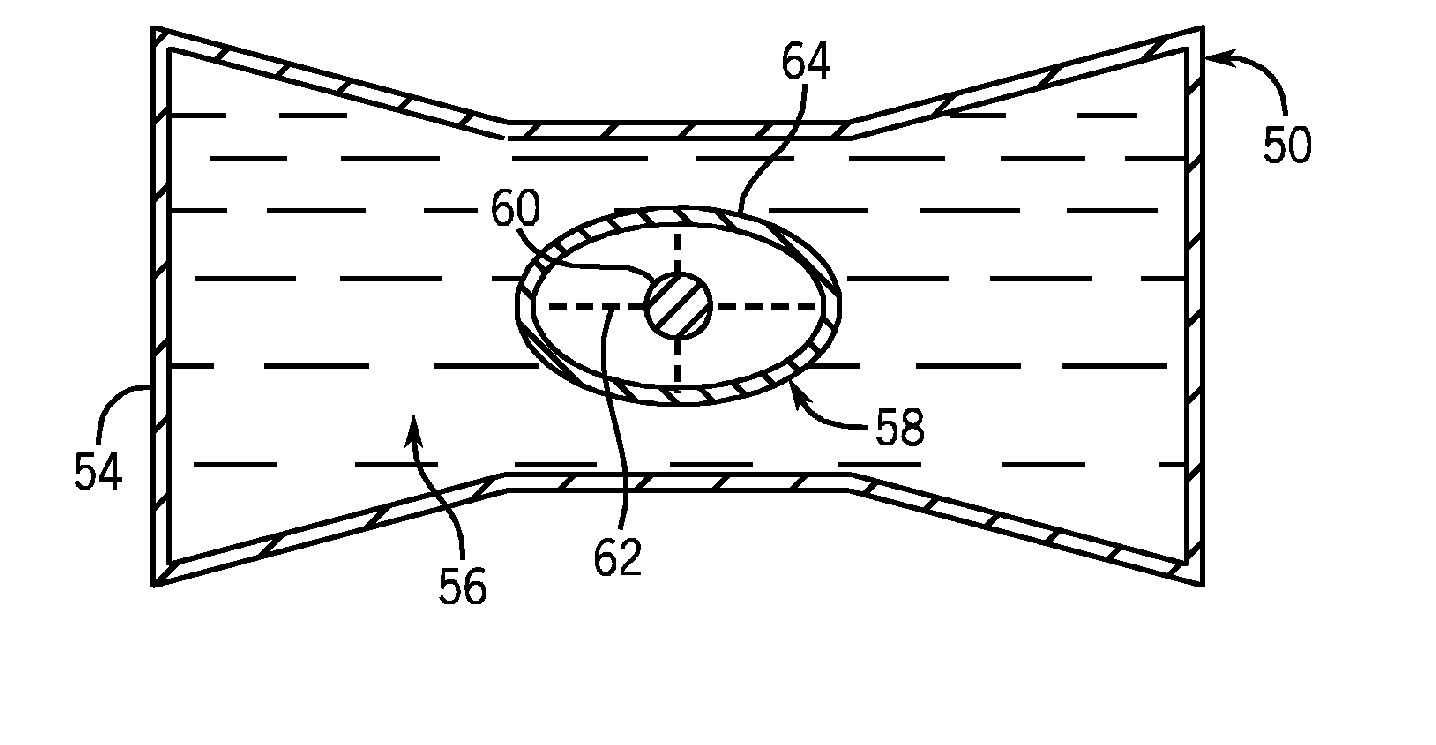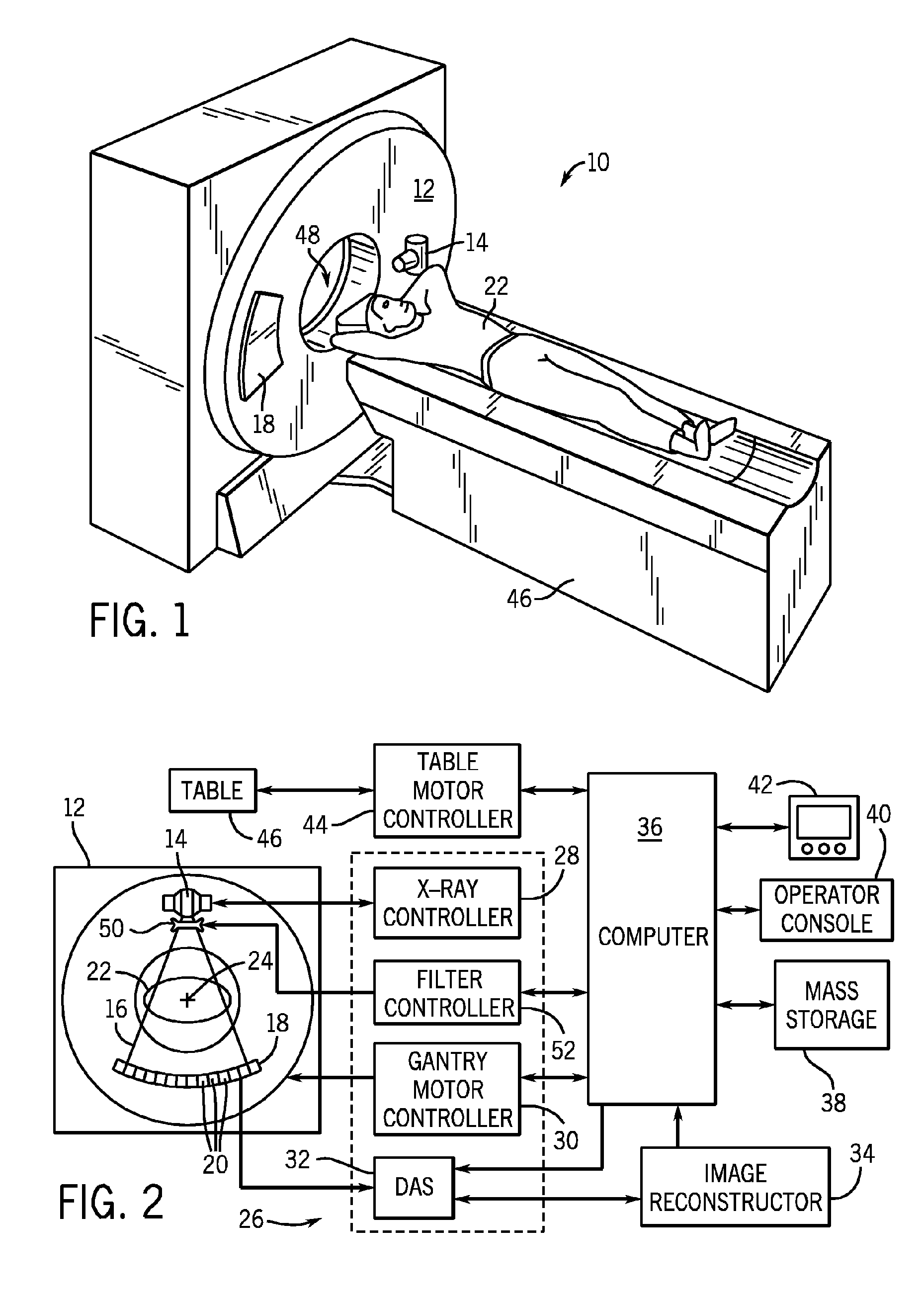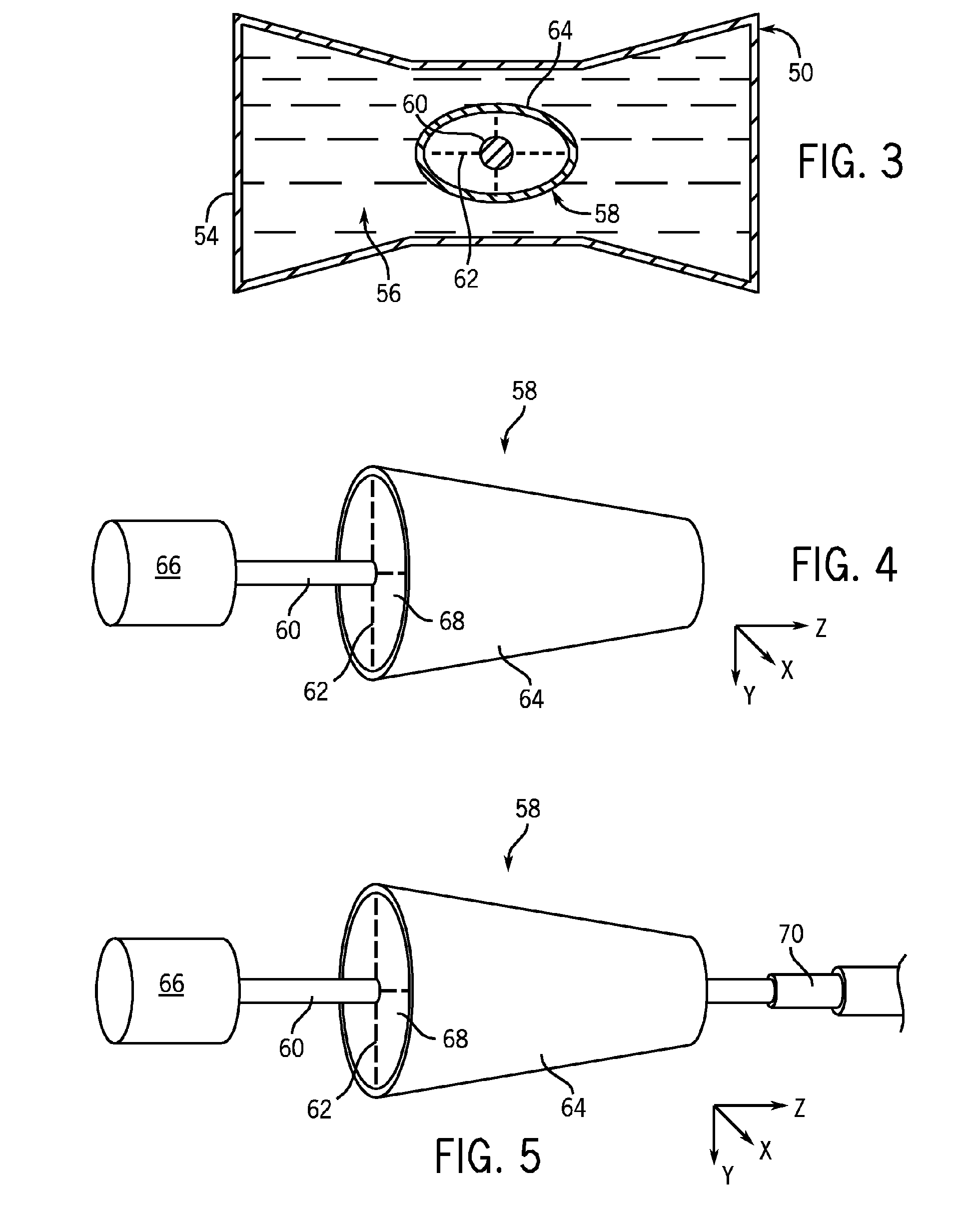X-ray filter having dynamically displaceable x-ray attenuating fluid
a filter and dynamic technology, applied in the field of radiographic imaging, can solve the problems of inability to provide independent data or feedback as to the energy and incident flux rate of photons, inability to provide energy discriminatory data or otherwise count the number and/or measure the energy of photons actually received by a given detector element or pixel, and inability to provide ct imaging as a viable diagnostic imaging tool, etc., to achieve low x-ray flux, low x-ray flux, saturation edge edge array
- Summary
- Abstract
- Description
- Claims
- Application Information
AI Technical Summary
Benefits of technology
Problems solved by technology
Method used
Image
Examples
Embodiment Construction
[0033]The operating environment of the present invention is described with respect to a four-slice computed tomography (CT) system. However, it will be appreciated by those skilled in the art that the present invention is equally applicable for use with single-slice or other multi-slice configurations. Moreover, the present invention will be described with respect to the detection and conversion of x-rays. However, one skilled in the art will further appreciate that the present invention is equally applicable for the detection and conversion of other high frequency electromagnetic energy.
[0034]While the present invention is applicable with a number of radiographic imaging systems, it is particularly well-suited for CT systems and, especially, those systems having detectors with relative small dynamic range, such as photon counting and energy discriminating detectors. In this regard, the present invention is believed to be a key enabler for the use of direct conversion and energy dis...
PUM
 Login to View More
Login to View More Abstract
Description
Claims
Application Information
 Login to View More
Login to View More - R&D
- Intellectual Property
- Life Sciences
- Materials
- Tech Scout
- Unparalleled Data Quality
- Higher Quality Content
- 60% Fewer Hallucinations
Browse by: Latest US Patents, China's latest patents, Technical Efficacy Thesaurus, Application Domain, Technology Topic, Popular Technical Reports.
© 2025 PatSnap. All rights reserved.Legal|Privacy policy|Modern Slavery Act Transparency Statement|Sitemap|About US| Contact US: help@patsnap.com



